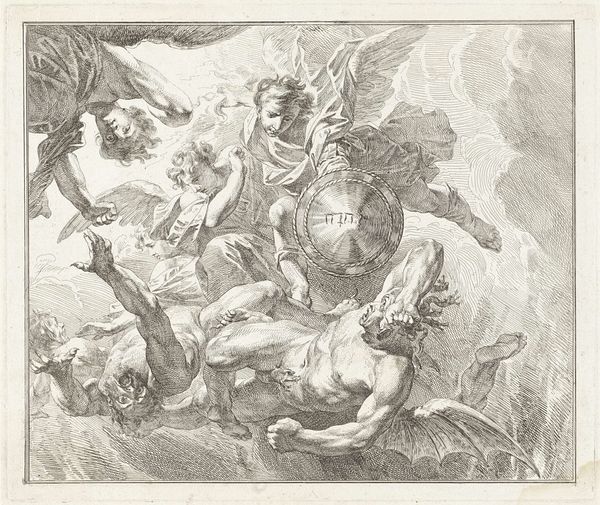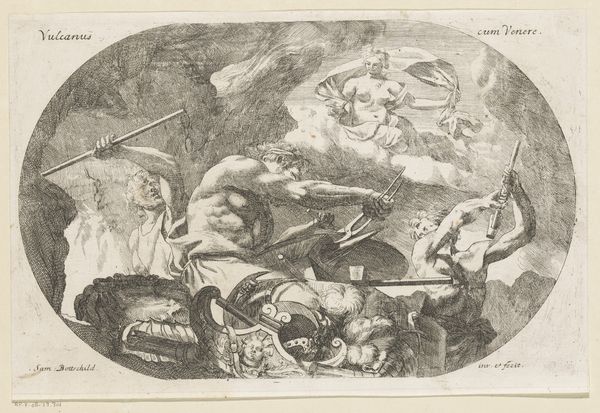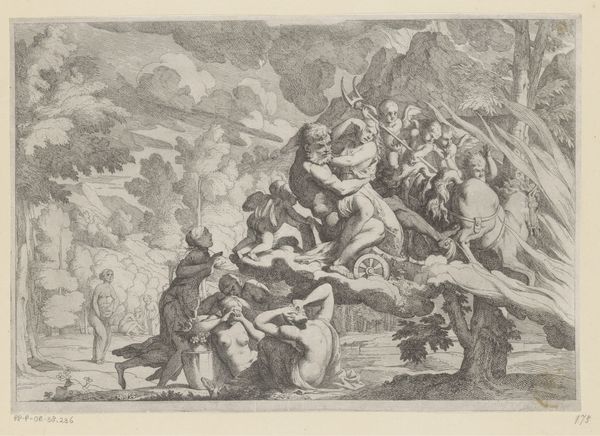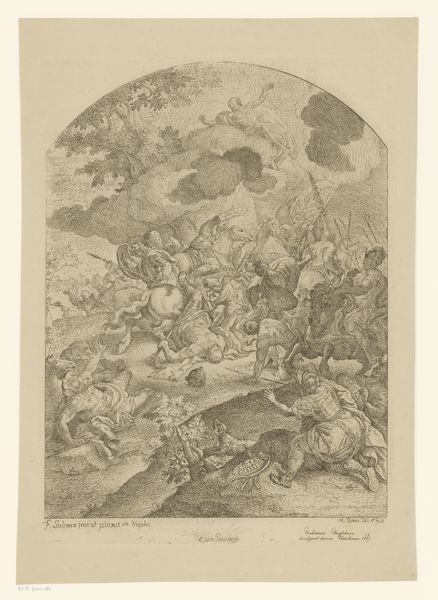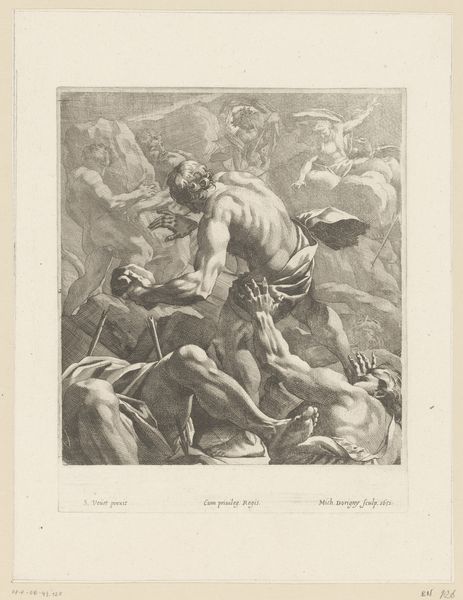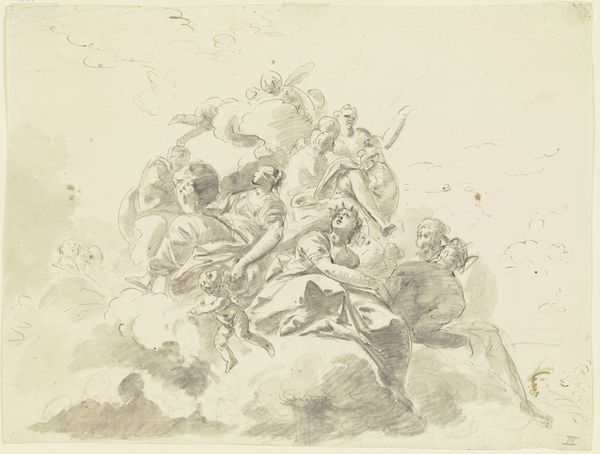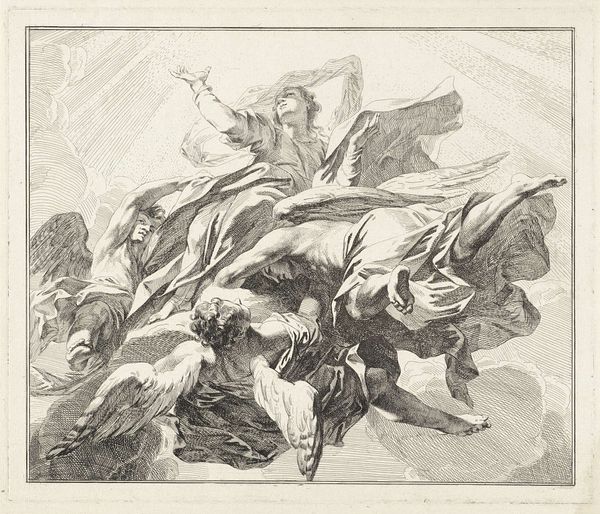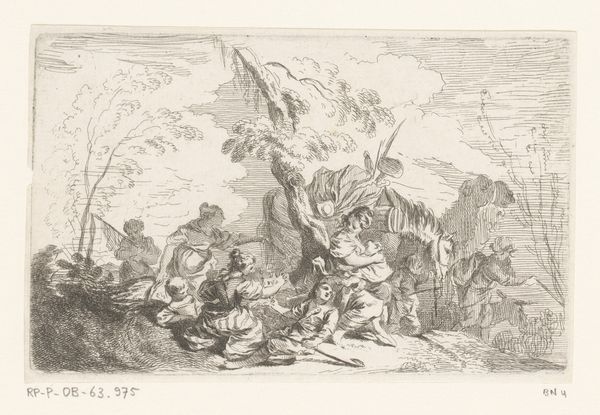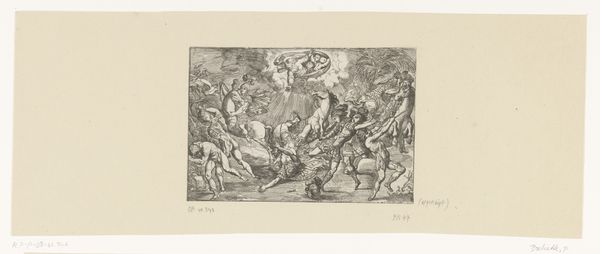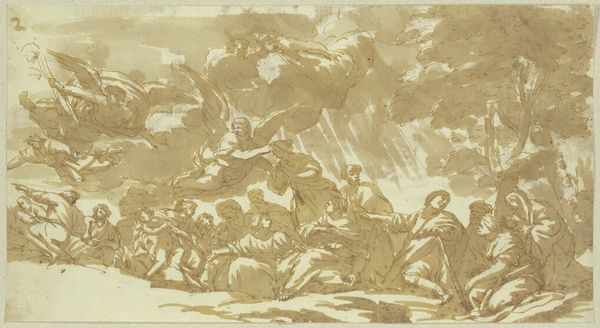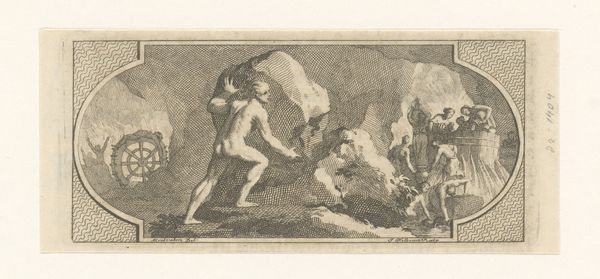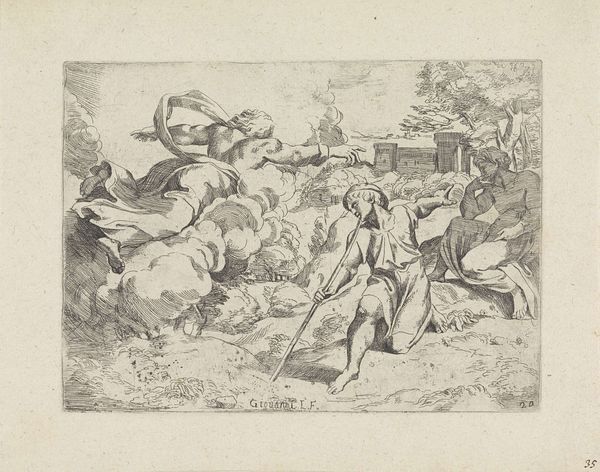
print, engraving
#
pencil drawn
#
baroque
# print
#
pencil sketch
#
light coloured
#
old engraving style
#
figuration
#
pencil drawing
#
history-painting
#
engraving
Dimensions: height 165 mm, width 222 mm
Copyright: Rijks Museum: Open Domain
Editor: So, this is "Defeat of the Titans," an engraving by Philip van Gunst, made sometime between 1685 and 1732. It's pretty overwhelming, honestly, with all these bodies and rocks swirling around. What kind of story do you think it's telling? Curator: It's a powerful rendition of the Titanomachy, the great war between the Olympian gods and the Titans. Notice the swirling chaos, bodies falling… Van Gunst masterfully uses light and shadow here to amplify the sense of upheaval and defeat, literally and symbolically casting these giants into darkness. It speaks to the psychological weight of being overthrown. Editor: So, beyond just showing the battle, is it saying something about power? Curator: Absolutely. The Titanomachy isn't just a fight; it's about the transfer of power, a new order replacing the old. Consider what these figures represented to their original audience. The Titans often symbolize primal forces, raw and untamed, whereas the Olympians represented a more ordered, rational world. The ‘civilized’ world. Editor: That makes me think about how we still use these kinds of symbols today, like in movies. Curator: Precisely! These visual symbols persist through time. Consider how similar imagery might be used to represent conflict in modern narratives. How might an artist today depict a similar struggle for power, and what symbols might they employ? Editor: I hadn’t thought about it like that. I always saw Greek myths as old stories, but it’s interesting how the themes keep showing up. Thanks! Curator: My pleasure. The engraving reveals the endurance of these fundamental conflicts, reinterpreted for each age. Keep watching and questioning!
Comments
No comments
Be the first to comment and join the conversation on the ultimate creative platform.
